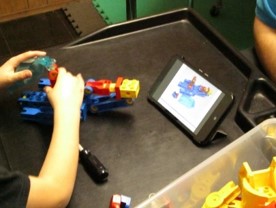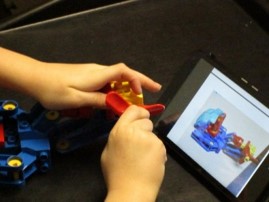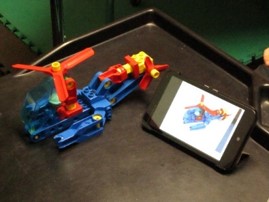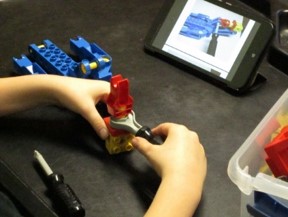The ability to incorporate use of both sides of the body represents acquisition of important developmental milestones. We see this first when a baby holds a bottle with both hands to drink and hold toys, next when we see the toddler using all four extremities to crawl, and later on when the toddler begins to walk. Use of both hands to work with tools represents a higher level of bilateral motor integration skill.
Bilateral motor integration incorporates the whole body, not just the hands.
However, since development of bilateral motor patterns typically progress in a head to toe fashion, we tend to see the progression first as children begin to show mastery of the muscles of the face and hands. As such, the ability to coordinate both sides of the body is generally shown through skilled hand function in daily living activities, years before skilled whole body patterns are shown through sports activities.
Because facial and hand muscles tend to be the first indicators of developmental motor skills, you’ll want to consider your child’s progress with some of these daily living skills:
- Uses both hands to hold a sippy cup
- One hand stabilizes an object (holds it still) while to other hand manipulates a corresponding object (i.e. while placing rings onto a post)
- Holding a paper still with one hand while using a writing tool to scribble or write with the other hand
- One hand holds a button hole open while the other hand pushes a button through it
- Drawing or writing for pleasure
- Playing with toys that involve use of tools





One Response to “Bilateral Motor Integration”